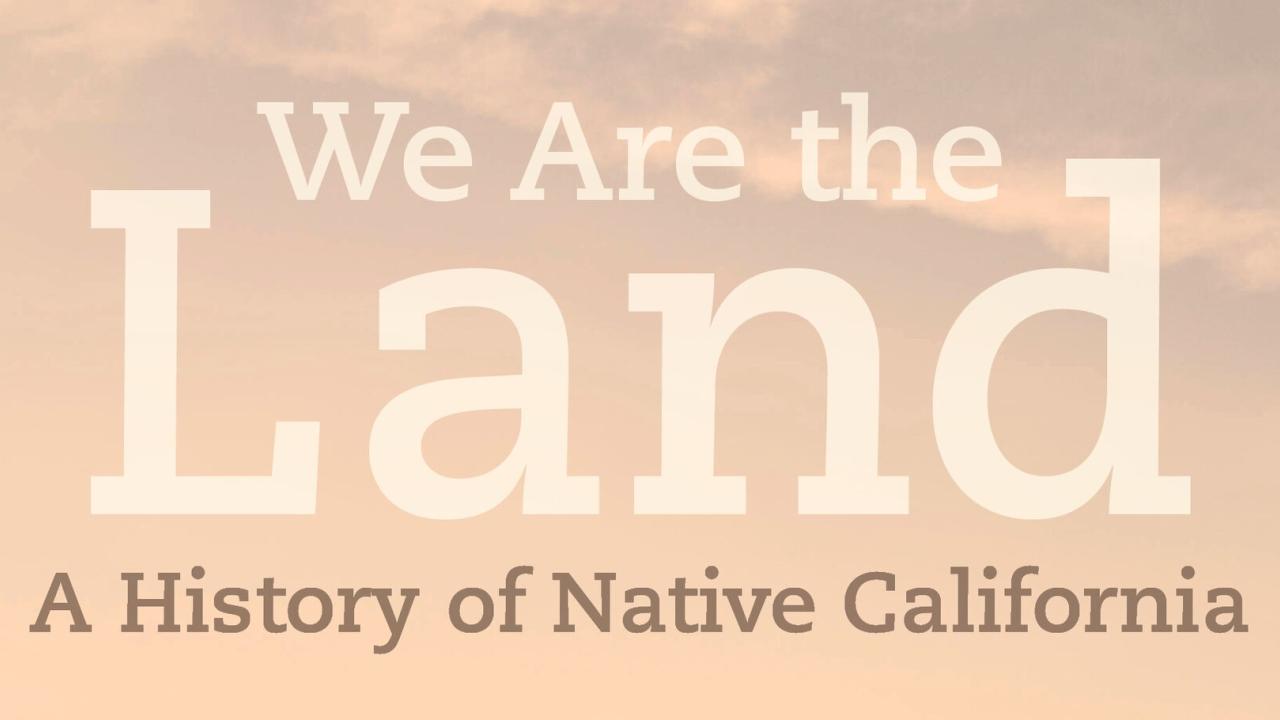
NAS Colloquium Tells a Native History of California
The Native American Studies department closed out the month of November with their final colloquium of the fall: "We Are the Land: A Native History of California in the 20th and 21st Centuries." The event, hosted over zoom on Tuesday, November 30, brought William Bauer (Wailacki and Concow) to the virtual seminar space for a lecture on his recent book, We Are the Land: A Native History of California.
Bauer is no stranger to UC Davis – he was a postdoctoral fellow at Davis and continues to work with PhD students in NAS from his home department at the University of Nevada. His previous books, including California Through Native Eyes: Reclaiming History and "We Were All Like Migrant Workers Here": Work, Community and Memory on California's Round Valley Reservation, 1850-1941, are both frequently taught in NAS classes here at Davis.
Bauer’s talk on this occasion drew from his recently published book We Are the Land, coauthored with Damon B. Akins. The talk was broken into two major parts. First, he discussed his goals for the book and how those goals shaped the writing process and the book’s organization. Then, he read from two sections of the book, each focused on a different location in California.
We Are the Land is a survey of California Native history from the creation stories of the Native peoples of the region through 2020, including how some California Indian nations responded to the pandemic. Bauer explained that one of his goals in writing this book was to refute the popular notion that Native people have disappeared from the state. The book demonstrates the continued relationships that Native people have maintained with the land and people of the region, even as settler states have tried to divorce them from the land and from each other. We Are the Land engages with previous surveys of Native history, including the work of Jack Forbes, one of the founders of the UC Davis NAS program, refreshing and adding to these foundational scholarly texts and bringing them into the present. By writing the history of Native people into the 20th and 21st centuries, he hopes to show that Native history is fundamental for understanding California and the United States today.
We Are the Land is a chronological narrative in ten chapters. Between each chapter is what Bauer calls a “Native Space” – a short vignette focusing on a single location and the role that Native people played in its history. These Native Spaces sections highlight the importance of a place-based, land-based approach when dealing with Native history. Bauer also expressed hope that these sections would prompt readers to think about the location where they are reading the book and how those places remain Native spaces.
In the second half of the talk, Bauer read from two of the Native Spaces sections of the book, the first on Sacramento and the second on Ukiah. Bauer highlighted the ongoing fight of the Nisenan people to remain on their ancestral lands despite waves of settler encroachment and violence. He closed this section by reflecting on the Native people who continue to come to Sacramento from across the state to lobby lawmakers and fight for Indigenous people in the state’s capital. When discussing Ukiah, he also focused on the resilience of Native people, this time detailing the struggles of the Pomo people and their attempts to reclaim their traditional lands by pooling funds to buy communal land holdings.
When discussing his process in writing the book, Bauer told a story about the book’s title. At first, he said, the working title was We Use the Land. It was only when the title changed to We Are the Land that the book began to fall into place. Bauer hopes that this change in title, along with the interspersing of the Native Spaces sections, highlights the centrality of land in Indigenous history and forms of knowledge production. Despite centuries of settler state violence, California Native people continue to maintain their relationships to the land and continue to shape California history.
